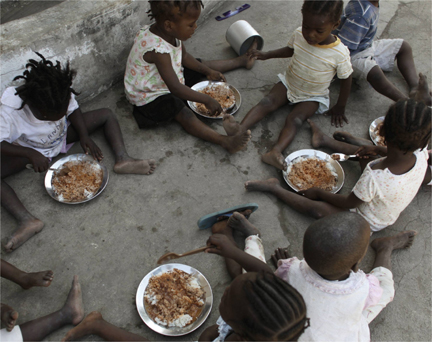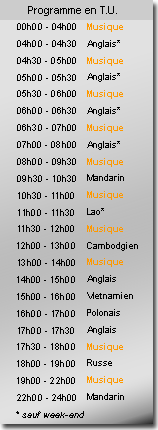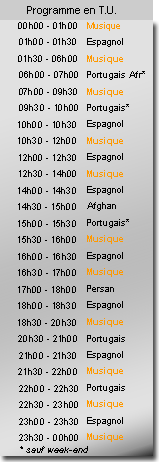Haiti earthquake
Seismologists warn of more aftershocks, search and rescue phase over
Article published on the 2010-01-23 Latest update 2010-01-23 15:33 TU

Children have a meal at the Maison Des Affaires de Dieu orphanage in Port-au-Prince on 22 January
(Photo: Reuters)
Seismologists said on Saturday that more aftershocks in the Haitian capital could create further devastation. They say that aftershocks in Port-au-Prince with significant magnitude could risk bringing down more buildings. On Friday, Haiti’s government called off the search and rescue phase, although two survivors were miraculously pulled out of the rubble ten days after the disaster.
Jessica Sigala, from the US Geological Survey told RFI that, “we tend to see aftershocks for days, weeks, months later. And that’s just because of the amount of energy released, the earth is just trying to get back to normal.”
It being a shallow quake, one which originates within 60 kilometres of the earth’s outer surface, means that large aftershocks are possible, as on Wednesday when an aftershock measuring 5.9 on the Richter scale struck the island.
Although seismologists and geologists use increasingly sophisticated tools to predict tectonic plate movement, Sigala admits that, “we don’t know how long these aftershocks are going to keep happening [for].”
Meanwhile, the Haitian government called off the search and rescue phase of the relief operation on Friday.
Elizabeth Byers, a spokesperson for the UN's Office for the Coordination of Humanitarian Affairs, told RFI that, "the focus is on the survivors."
"We have to take care of the survivors, so far there were 132 live rescues by international rescue teams [...] we are focusing on shelter now, because the rainy season and hurricane season is starting right now, and these people need decent shelter," she added.
One 84-year-old woman and 22-year-old man were miraculously rescued on Friday, after spending ten days trapped under the rubble.
Haiti earthquake
Seismologists warn of more aftershocks, search and rescue phase over
2010-01-23 15:22 TU
Haiti - earthquake adoptions
Fast-track adoptions could break up Haitian families, NGOs fear
2010-01-22 11:55 TU
Haiti earthquake
Aid efforts switch from searching for victims to aiding survivors
2010-01-22 16:33 TU







